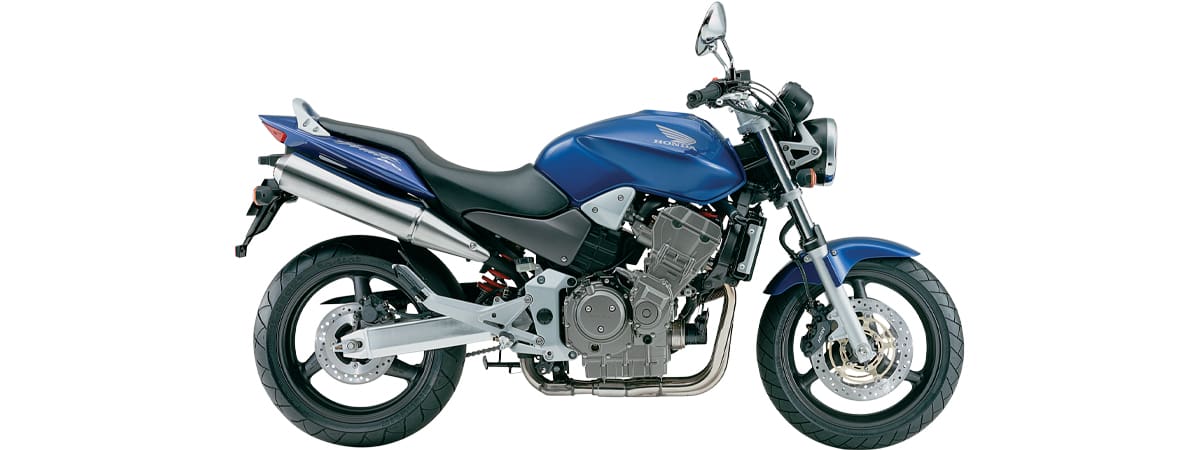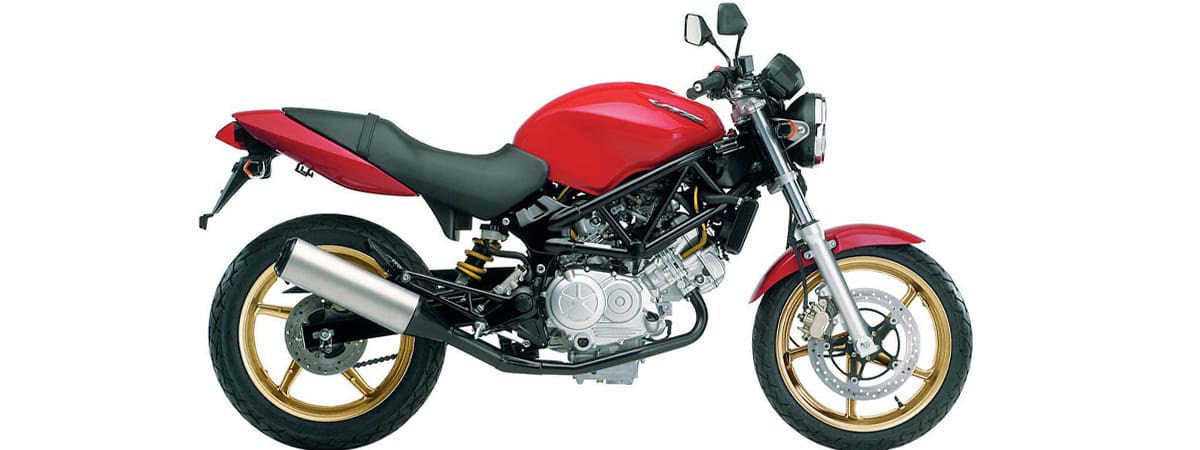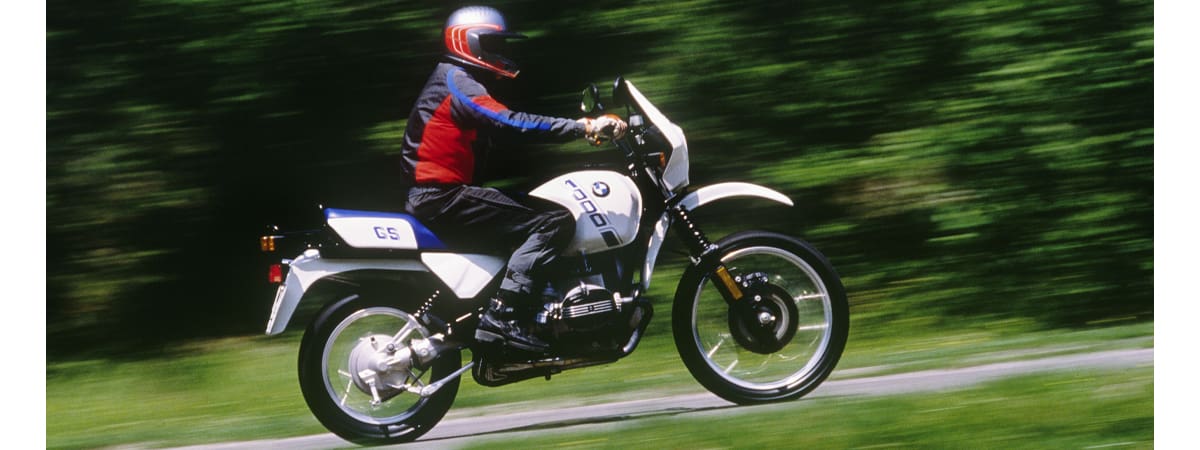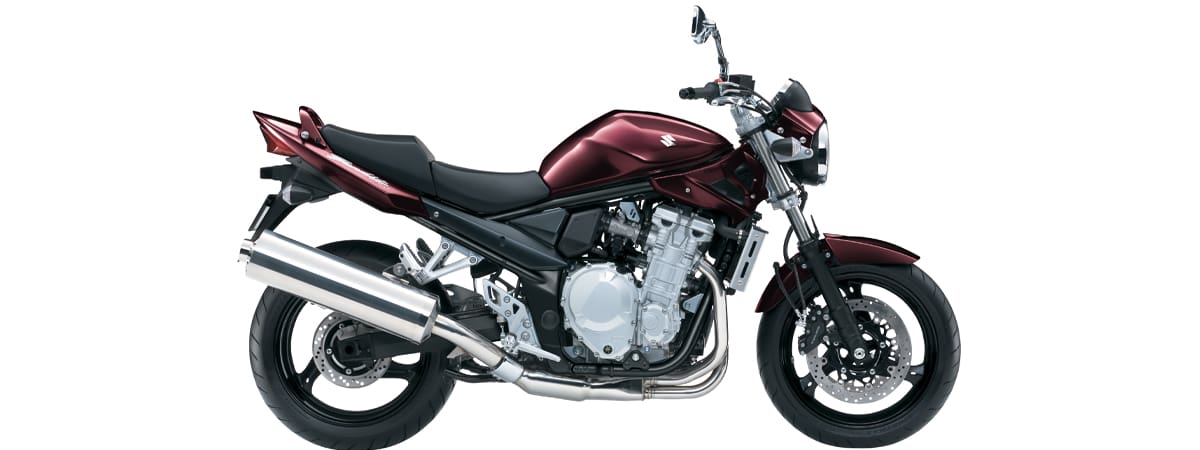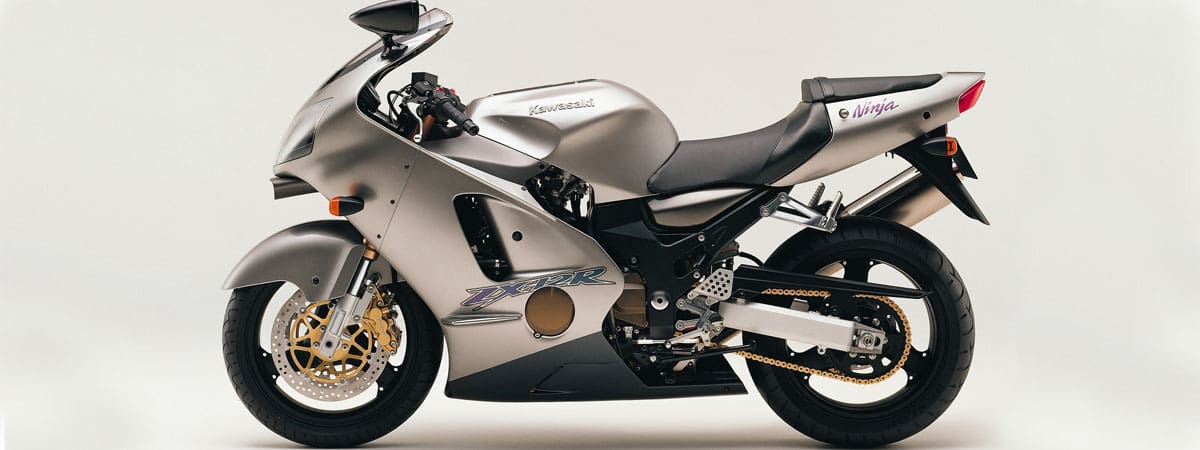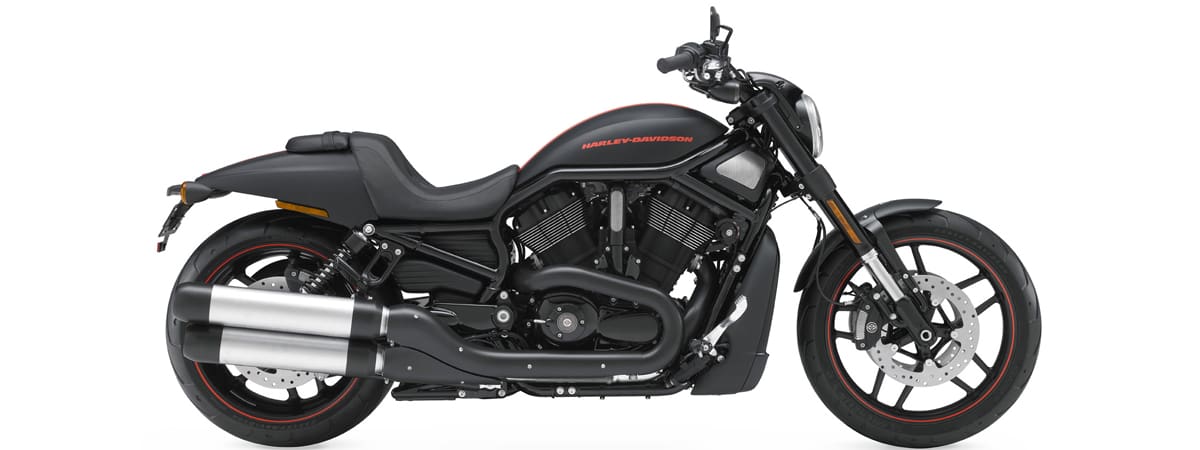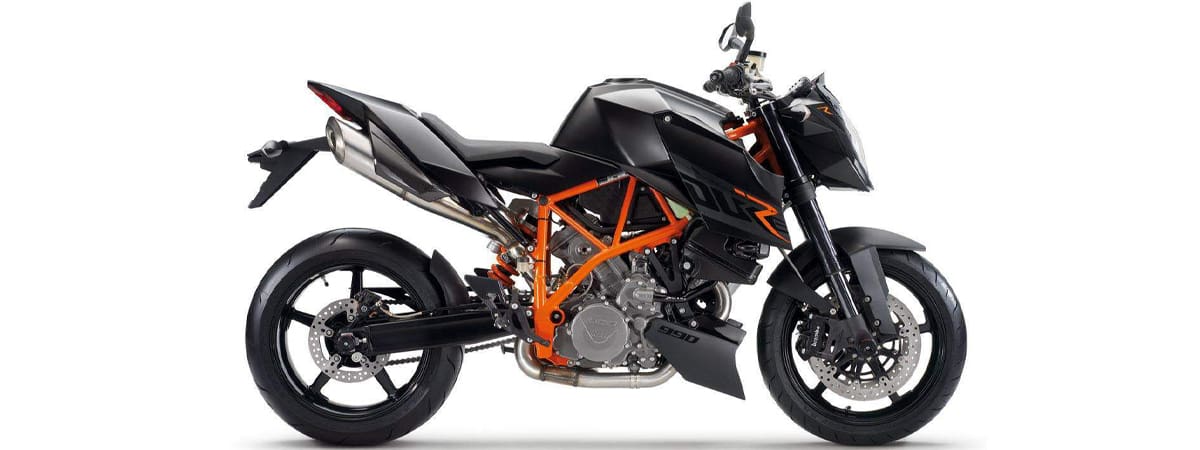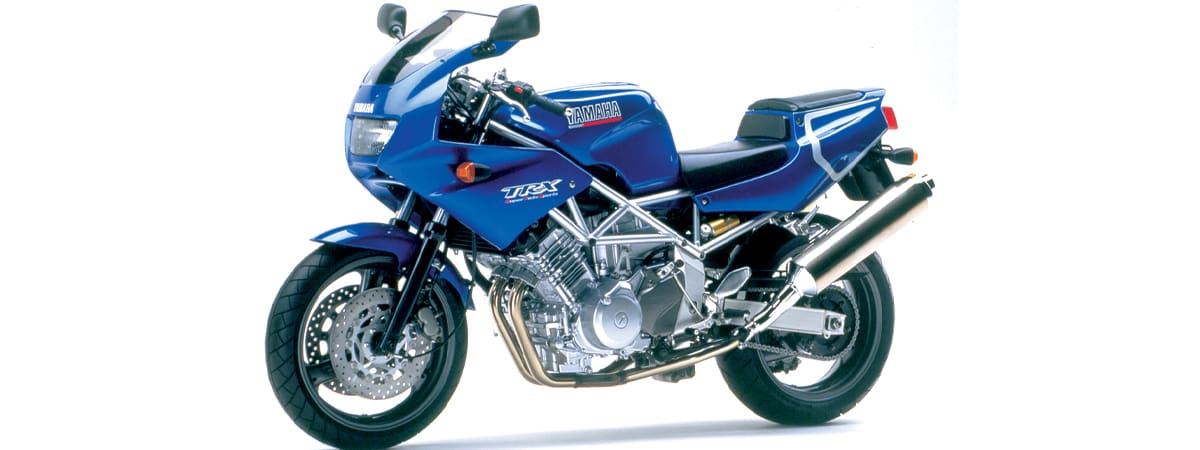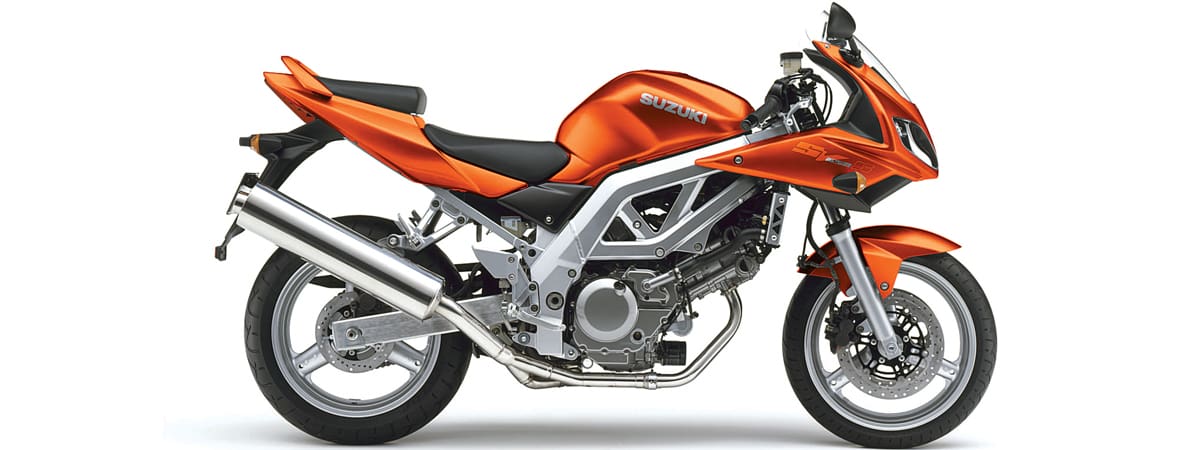The Suzuki Bandit 1250 was introduced in 2007 following the original Bandit 1200 model that was released in 1996. From the beginning Suzuki’s big Bandit was a great bang-for-your-buck proposition. For a quite modest price it offered very strong all-round performance and great reliability. That’s what you get from combining a very torquey but under-stressed big-bore four-cylinder engine with a really competent chassis. The fact that a big Bandit is also up for a bit of street hooligan action is just icing on the cake.
While the air/oil-cooled Bandit 1200 had its market-niche more or less to itself initially, other brands had added worthy contenders to the big-bore streetbike category by the time the Bandit 1250 arrived. However the new Bandit, a heavily-revised bike powered by an all-new liquid-cooled 1255cc engine, was more than capable of continuing to fly the flag for Suzuki. Although the max power and torque figures for the new engine were close to identical to those of the old air-cooled engine, the way it delivered them was very different. The fuel-injected 1255cc engine produced its max torque at 3750rpm, whereas the earlier carburettor-fed version required 6900rpm on the tacho to access its peak torque. Internal changes also allowed the new motor to spin up more rapidly in response to a fistful of throttle. The combination of the ultra-flat torque curve and its livelier response meant the new engine was the last word in rider-friendliness and gutsy performance.
A six-speed gearbox replaced the 1200’s five-speed unit. A new stiffer tubular-steel twin-cradle frame and improved suspension
– 43mm fork up front and monoshock with linkage at the rear, both preload adjustable – enhanced the Bandit 1250’s handling.
With an overall length of 2130mm and a dry weight of 229kg the Bandit 1250 is a lot of motorcycle – but it has an uncanny ability to feel like a much lighter and smaller machine once you’re rolling, perfectly complementing the rider-friendly nature of the engine and the bike’s good overall ergonomics. Its 785mm-high seat accommodates a broad range of rider shapes and sizes, and is also very comfortable. The fairly upright seating position is perfect for commuting. Clutch and gearshift action are sweet and easy. Braking is powerful and progressive (some Bandit 1250 variants have ABS).
The engine is stunningly smooth – turbine-smooth, really – and it responds obediently. It’s a delight to use when trickling through peak-hour traffic. It’s even more impressive when you leave the confines of the city. You hardly need the gearbox’s six speeds – at 100km/h in top gear you’re cruising at a relaxed 3200rpm, and you’re already into the very meaty part of the torque curve. You don’t need to kick it down a gear for overtaking; just twist and go. If you’re so inclined, and if diplomatic immunity protects your licence, keep it nailed and the lovely big engine will seamlessly and very rapidly transport you from 100km/h to 230km/h-plus. It’s that easy and that good.
The handling is also impressive. Because it’s a sizable bike the best approach to the tight stuff is slow in and fast out – but it really powers out.
My experience on a 1250 on Mad Sunday at the Isle of Man in 2011 with my wife on the pillion seat was an indication of the bike’s overall competence at speed. While we obviously moved over for the guys on sportsbikes who were seriously going for it, the big Suzie ran happily and comfortably with an impressively fast bunch. It was brilliant.
The Bandit’s modest thirst for fuel means the 19-litre tank is good for a safe touring range of 300km-plus.
While this review covers the basic naked Bandit 1250 model, the comments are generally equally applicable to the half-faired Bandit 1250S and the fully-faired GSX1250FA sports-tourer.
The Bandit 1250 is a big bike, a very impressive performer that’s well-engineered, well finished and very reliable. For good measure also consider its very attractive price tag and its totally rider-friendly nature.
What to look for
The Bandit 1250 is a robust and well-engineered motorcycle that has proved to be reliable and quite trouble-free. Trade contacts tell me there’s no pattern of known problems. Don’t worry about a bit of mechanical noise from an idling engine – they’re like that. As always adjust your offer to cover worn consumables like tyres, chain and sprockets, and brake pads, also brake rotors close to minimum thickness. And check steering-head bearings – too many monos can take their toll here. The ideal prospect is a low kays example with a full service record and no signs of damage or neglect.
Service history
Capable DIY owners can look after a lot of the normal servicing on a Bandit 1250. On a naked Bandit you get good access to most of the mechanical stuff once the fuel tank is removed. Oil/filter changes – 6000km; spark plugs – 12,000km; valve clearance checks – 24,000km. Valve-shim changes, when needed, and electronic fuel injection work are best left to trained technicians with the right gear.
Story Rob Blackbourn Photography AMCN Archives



